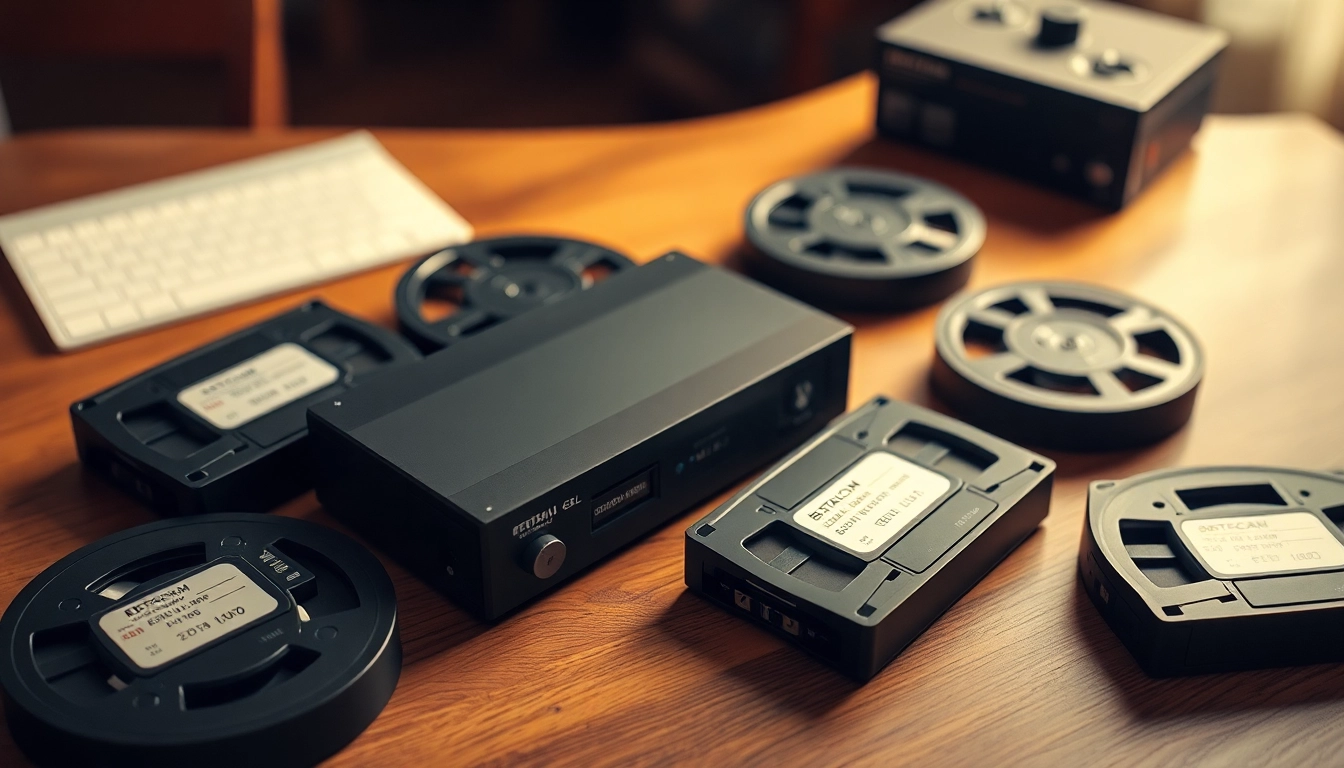Understanding the Betacam Format
What is Betacam?
Betacam is a professional video format that originated in the 1980s, primarily developed by Sony. It quickly became the standard for broadcast television, characterized by its high-quality video recording capabilities and reliability. Betacam tapes are widely used in the production and broadcasting industries, with a rich history that paved the way for later formats.
Betacam Variants Explained
Over the years, several variants of the Betacam format have emerged, each designed to cater to specific needs in video production. The most notable variants include:
- Betacam SP: An improved version that provided enhanced video fidelity and color reproduction.
- Digital Betacam (DigiBeta): A digital recording format that offers superior image quality and is favored for high-end productions.
- Betacam SX: This version uses an advanced compression algorithm, making it ideal for news and field production, thanks to its efficient storage capabilities.
Each of these formats serves a different purpose while maintaining the fundamental design principles of the original Betacam system, which remains widely used in professional settings.
Why Transition to Digital?
Transitioning Betacam content to a digital format is essential for several reasons. Firstly, physical tape deterioration and environmental factors can lead to loss of quality and data over time. In contrast, digital files are more resilient, easier to store, and accessible on various devices. Additionally, digital formats simplify the editing and sharing processes, aligning with modern workflows. To explore how to make this transition seamless, you might find our comprehensive guide on Betacam to Digital services useful.
The Conversion Process
Steps to Convert Betacam to Digital
Converting Betacam tapes to digital involves several structured steps to ensure a high-quality transfer. Here’s a detailed look at the process:
- Assess Your Tapes: Check the condition of your Betacam tapes. Look for any visible damage that may affect playback.
- Choose Your Format: Decide on the digital format you wish to use, such as MP4, MOV, or AVI, based on your future use-case requirements.
- Setup Equipment: Utilize a quality Betacam player and a reliable capture device connected to your computer. Ensure you have the appropriate cables and software.
- Playback and Capture: Play the tape while simultaneously recording it on the computer. Monitor the output to ensure video and audio fidelity during the entire length of the tape.
- Editing and Finalizing: Edit the captured video to rectify any issues such as noise reduction or color correction. Save the final cut in your desired digital format.
Choosing the Right Equipment
Your choice of equipment plays a crucial role in the quality of the conversion. Consider using high-end VTR decks that are specifically designed for the Betacam format. Some recommended brands include:
- Sony: Known for its reliability and quality, Sony offers various models that effectively support Betacam tapes.
- Panasonic: Offers competitive models that can handle different Betacam formats and provide superior playback quality.
Additionally, invest in a good video capture card, which can significantly impact the quality of the output video and audio.
DIY vs Professional Services
Deciding between a DIY approach and hiring a professional service depends on your specific needs and technical skills:
- DIY: This option is cost-effective if you have the necessary equipment and technical know-how. However, it requires time, patience, and a good understanding of video editing.
- Professional Services: Enlisting experts can save time and often ensures a higher quality transfer. They possess specialized equipment and experience in handling a variety of tape issues.
Weigh the pros and cons of both options based on your budget and the importance of the content you wish to convert.
Quality Considerations
Resolving Common Tape Issues
Many Betacam tapes may exhibit common problems that can hinder quality during digital conversion:
- Tape Damage: Scratches, mold, or warping can significantly affect playback quality. Repair kits are available but can be time-consuming.
- Magnetic Tape Deterioration: Oxide shedding or fading over time may occur. It is advisable to transfer the tapes as soon as possible to avoid further degradation.
- Playback Issues: If a tape doesn’t play correctly, consider trying different VTR models or cleaning the heads of your equipment.
Addressing these issues promptly can enhance the quality of the final digital product.
Maximizing Output Quality
To achieve the best possible output quality during your transfer, consider the following tips:
- Optimal Settings: Adjust the resolution and bitrate settings on your video capture software for the best output quality.
- Noise Reduction: Use video editing software to apply noise reduction filters to enhance the clarity of your video.
- Color Grading: Adjust colors during post-production to ensure vibrant and accurate color representation.
Storage Options for Digital Files
Choosing the Right Storage Solutions
Once your videos are converted to digital formats, selecting the appropriate storage solutions is critical to maintaining their integrity:
- External Hard Drives: These provide ample storage space and are ideal for large files. Look for drives with backup options to safeguard your data.
- Cloud Storage: Options like Google Drive, Dropbox, or dedicated media storage services offer the ability to access files from anywhere and share easily.
- Network Attached Storage (NAS): For those who want centralized storage accessible by multiple users, NAS systems offer great reliability and security.
Cost and Time Involved
Estimating Conversion Costs
The cost of converting Betacam tapes to digital can vary significantly based on factors such as:
- Volume of Tapes: Bulk transfers can often lead to discounted rates.
- Type and Length of Tape: Specialty formats and longer tapes may incur additional fees.
- Professional Services vs DIY: Hiring professionals tends to be more expensive but often comprehensively handles potential issues.
Research pricing from various service providers to understand the market rates and find suitable options for your budget.
Timeframes for Different Formats
The timeframe for converting Betacam tapes can also differ based on the method chosen:
- DIY: Depending on the availability of equipment and editing software, a single tape could take several hours to convert and edit.
- Professional Services: Most servicers promise turnaround times typically ranging from a few days to a couple of weeks, dependent on their workflow and existing workload.
Success Stories and Best Practices
Real-Life Case Studies
Many individuals and institutions have successfully transitioned their Betacam content to digital. For example, a local TV station migrated an extensive archive of Betacam SP tapes to digital, resulting in improved accessibility and preservation of their historical content. The project not only saved money in storage costs but also made material available for content reuse and archival purposes.
FAQs About Betacam to Digital Transfers
Here are some frequently asked questions regarding Betacam to digital transfers:
- Can all Betacam tapes be converted?
Yes, most Betacam tapes can be converted as long as they are playable. - How long will my digital files last?
If stored properly on reliable media, digital files can last indefinitely, but it’s advisable to refresh copies every few years. - Can I convert Betacam tapes myself?
Yes, with the right equipment and software, anyone can convert Betacam tapes on their own.
Future-Proofing Your Media Collection
To ensure the longevity of your digital media collection, consider implementing a media management strategy that includes regular backups, diversified storage solutions, and formats that are more resilient to technological advancements. Furthermore, keeping abreast of industry trends for media formats can ward off obsolescence, allowing future generations to access your media without difficulty.


